Last week’s post told how it happened that we were off to Alaska. This week it’s about Anchorage.
Having few plans worked out well. A number of things we had read repeated the oft-heard saying that, in Alaska, as in Maine, if you don’t like the weather, wait a while. The forecast was for periodic rain most days. We had options available, and were determined to make the best of whatever came our way.
Our first full day was forecast to be rainy. We decided to drive to Matanuska Glacier, a couple of hours drive northeast of Anchorage. We would also drive up Arctic Valley Road, just outside Anchorage, on the way.
Arctic Valley Road
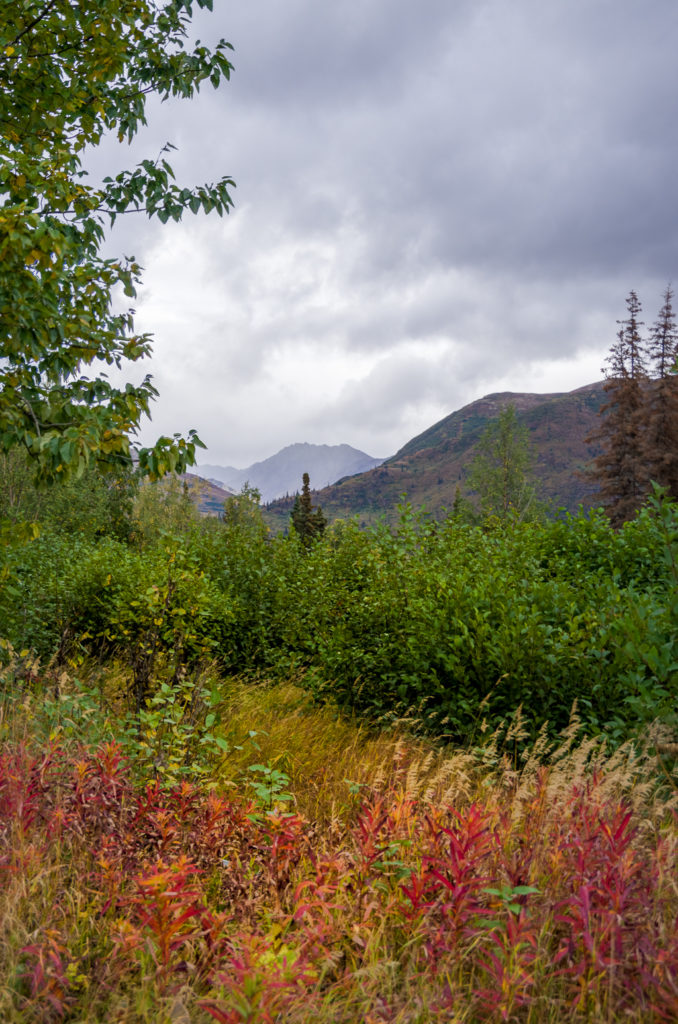
It was overcast, but not rainy as we went up Arctic Valley Road. The views were outstanding. We stopped repeatedly for photos.
There were also supposed to be lots of moose. Naturally, we saw none. The road is maintained by the military, but at the top is a ski resort.
Matanuska Glacier
Returning to the main road, we set out for Matanuska Glacier. The glacier is the largest reachable by road. It is something like 26 miles long and 4 miles wide at the terminus.
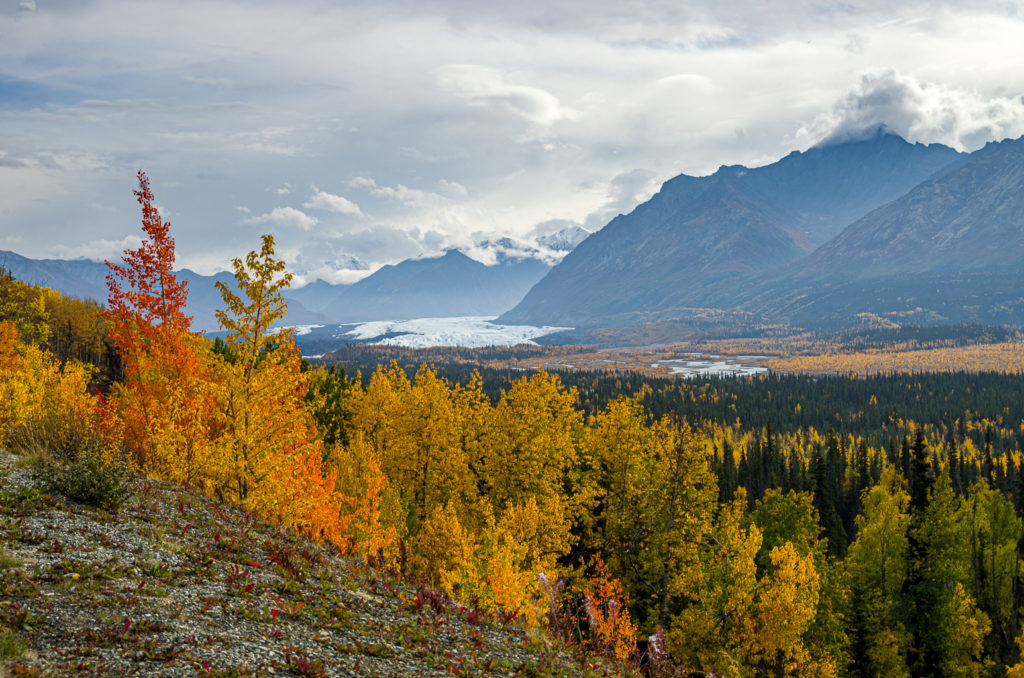
Matanuska Glacier terminus, over fall foliage.
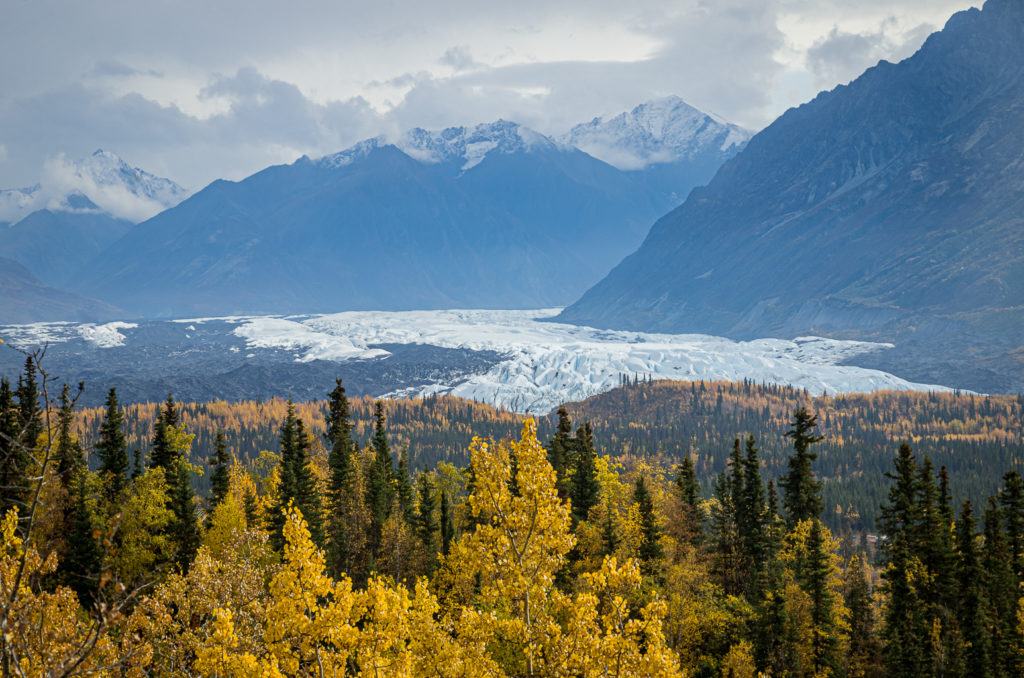
Matanuska Glacier
On the way back to Anchorage, we saw one moose about 1/4 mile off the freeway. She was so far away, we weren’t sure we could count her!
Turnagain Arm
Turnagain Arm is an arm of ocean, off Cook’s Inlet, beginning at Anchorage and going south to Portage. We drove down Turnagain Arm the next day. The first stop was to be Beluga Point, where we hoped to see the Bore Tide, and possibly Beluga whales.
The Bore Tide results from the extreme difference between low and high tides. In the right circumstances the tide can be several feet high.
When we arrived at Beluga Point, we were a bit early. The Bore Tide appears at Beluga Point about 75 minutes after low tide at Anchorage. We walked out on the rocks, taking photographs and enjoying the view in the lifting fog. Right on time, the tide appeared, but because the difference between low and high tides wasn’t enough, the Bore Tide was barely discernible.
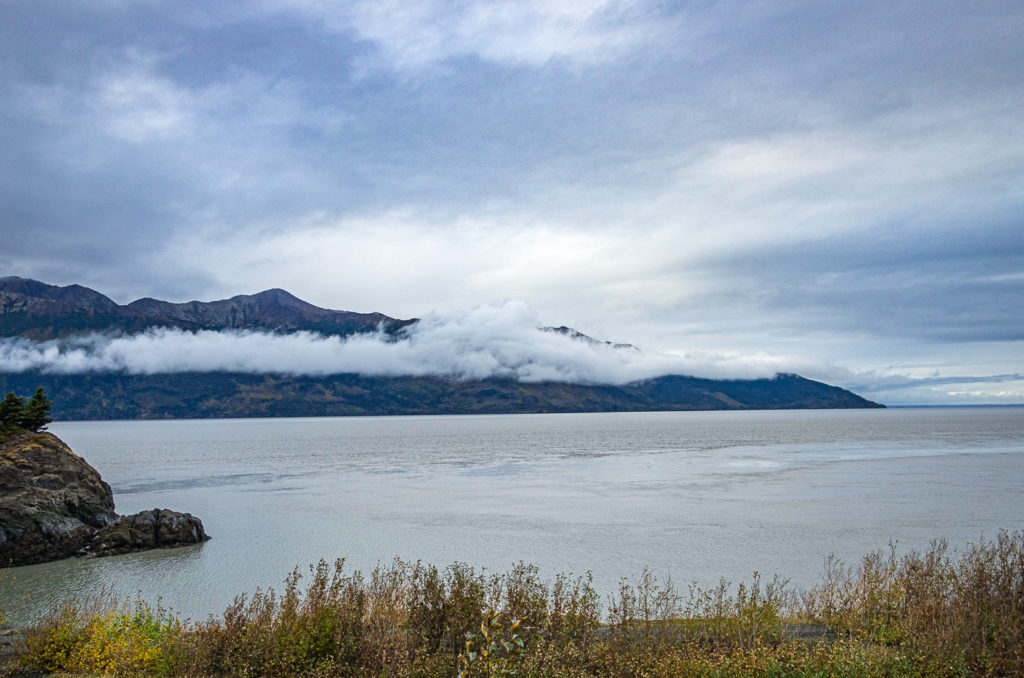
Turnagain Arm from Beluga Point
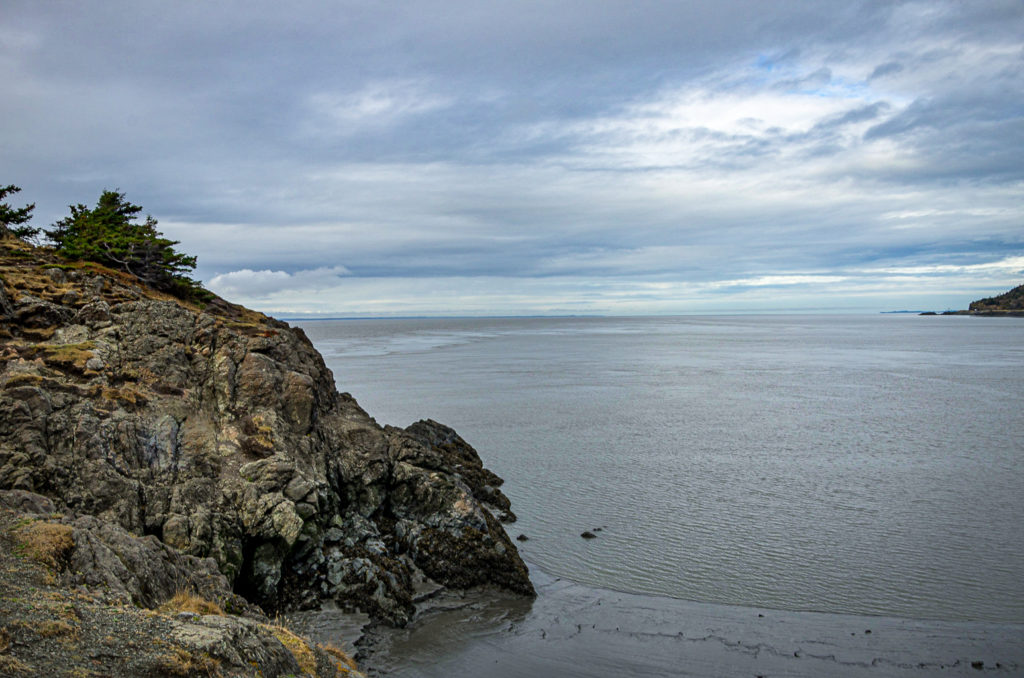
Turnagain Arm. In this view, a few minutes later, there were several Beluga whales.
We understood that often, about half an hour after Bore Tide, the Beluga whales appear at Beluga Point. We were not disappointed! Almost to the minute, we were watching the water and a white Beluga whale quickly surfaced, took a breath, and submerged. Then another, and another!
Sadly, due to a true rookie mistake, I had not changed the camera settings from the earlier landscape photos. Consequently, the photos of the Belugas were nothing but a blur!
South to Alyeska
Continuing south along Turnagain Arm, and looking up into the Chugach Mountains, we saw Dall Sheep clinging to the rocks.
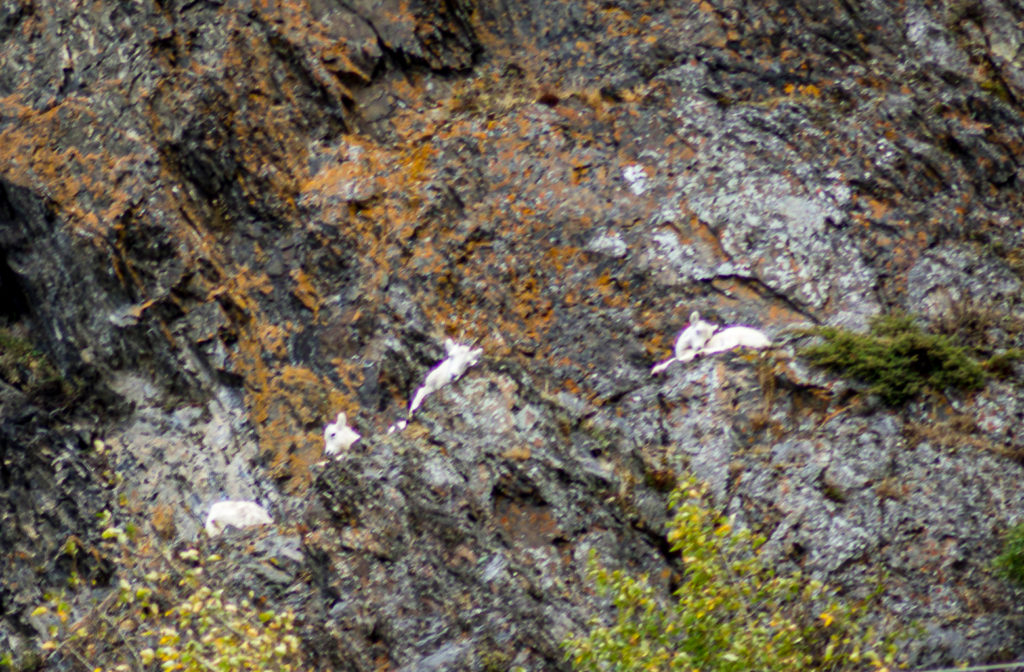
Dall Sheep
Near Alyeska, we spotted a glacier in the mountains. We had intended to take the tram to the top of the mountain for the view, but by the time we could stop to take a photo, the clouds had covered the mountain, so that nothing could be seen.
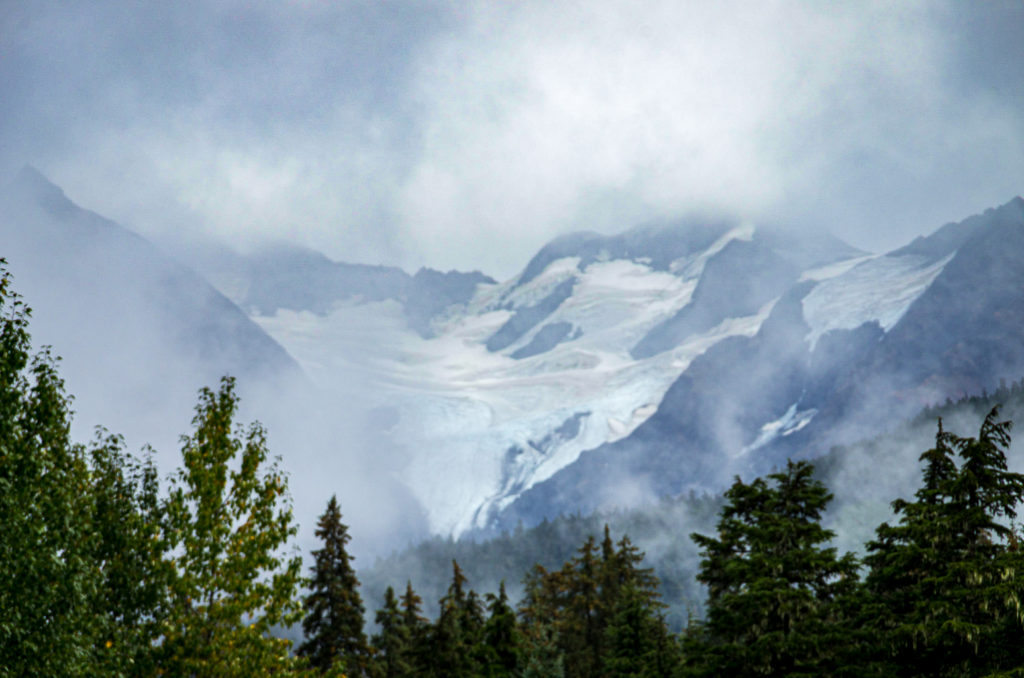
Glacier near Alyeska
Next day we drove down Turnagain Arm again. This time we stopped at Potter Marsh, a wildlife sanctuary near Anchorage. There we saw huge salmon in a creek. The marsh is beautiful, but we saw very little of wildlife during our visit.
Next time: Seward and the Glaciers
